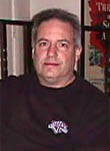|
|
This topic comprises 3 pages: 1 2 3
|
|
Author
|
Topic: How did 24 frams a sec. come about????
|
|
|
Jeffry L. Johnson
Jedi Master Film Handler

Posts: 809
From: Cleveland, Ohio, USA
Registered: Apr 2000
|
 posted 01-01-2005 11:00 AM
posted 01-01-2005 11:00 AM





Scott Eyman's "The Speed of Sound : Hollywood and the talkie revolution
1926-1930" states on page 112:
quote:
The speed of the film bearing the sound track had been standardized at 90 feet a minute, 24 frames a second. Although tradition has had it that 90 feet a minute was the optimum speed for the quality of sound reproduction, the fact of the matter was that, originally, Earl Sponable and Theodore Case had been experimenting with a speed of 85 feet a minute, which appears
to have worked satisfactorily. As Sponable said, "After our affiliation with the [Fox company] this was changed to ninety feet a minute in order to use the controlled motors already worked out and used in the Vitaphone system."* The standardization, then, was not made for purposes of sound quality, but for maximum profits for Western Electric.
* Western Electric engineer Stanley Watkins averred that 24 frames per second for Vitaphone was not part of a capitalist plot, but a purely arbitrary decision. "According to strict laboratory procedures, we should have made exhaustive tests and calculations and six months later come up with the correct answer," he related in 1961. "What happened was that we got together with Warners' chief projectionist and asked him how fast they ran the [silent] film in theaters. He told us it went at eighty to ninety feet per minute in the best first-run houses and in the small ones anything from one hundred feet up, according to how many shows they wanted to get in during the day. After a little thought, we settled on ninety feet a minute as a reasonable compromise."
| IP: Logged
|
|
|
|
|
|
|
|
|
|
Stephen Furley
Film God

Posts: 3059
From: Coulsdon, Croydon, England
Registered: May 2002
|
 posted 01-02-2005 04:27 AM
posted 01-02-2005 04:27 AM




quote: Randy Stankey
12 frames per foot
You've got some strange film there Randy, the pictures would be almost square, and you'd need 5 1/3 perfs per frame.
Edison actually started with film running much faster; I can't remember the exact speed, but it was somewhere around 40 fps. Ths was in the Kinetoscope, which used continuously moving film, and a shutter with just a narrow slit in it; It worked for direct viewing, but wouldn't have been very suitable for projection.
Le Cinématographe Lumière was desinged for projection (it also served as a camera) and ran the film intermittantly at much more conventional speeds. The film stock used was almost identical to Edison's, except that it had just a single round perforation on each side, pulled down by a pair of pins. It is actually possible to run modern 35mm film on a Cinématographe, I've seen it done. The pins will fit the third pair of perforations in each frame. The height of the perforations is rather more than it should be, but it does work.
Of course, there were no standards; film ran at whatever speed the operator cared to turn the handle, except for the Kinetoscope which, unusually, was motorised. The Cinématographe had two problems which would have had to be considered when deciding on a speed for it. Firstly, it was something of a film shreader, which could be improved by running it slowly. Secondly, it had a single-bladed, camera style, shutter which caused terrible flicker when used as a projector. This could be improved by running it quickly, so the actual speed had to be a compromise between these two requirements.
Some very early, pre-Edison, machines ran the film very slowly. Le Prince used one of his cameras, the single lens one, to film traffic on Leeds Bridge. Looking at the movement in the subject between frames, this machine probably managed about 6-8 fps. Obviously not fast enough.
During silent days film speeds tended to gradually increase, and it was generally recommended to project films slightly faster than they were shot. By the end of the silent era most cinemas were probably running their projectors at about 20-22 fps. For sound there obviously had to be a standard speed. With optical sound there would have been improved sound quality at a higher speed, but the difference between say 20 and 24 fps would have been prety minimal. It's certainly not the case that 24 was the lowest speed possible for sound recording; within a few years sound was being recorded at much lower speeds on 16mm film. 24 fps was also adopted for sound on disk, where it would have no direct effect on the sound quality. It is said that the 33 1/3 rpm disk speed, certainly not standard at that time, and which would have resulted in a reduction in sound quality, was chosen as it was the highest speed at which a 16 inch disk, the largest that existing presses could produce, would hold the sound for a full 1000 foot reel at 24 fps (11 minutes). I don't know if this was really the case.
I think it was probably a question of needing to set a standard, of recognising that higher speeds gave better results and therefore taking the highest speeds then in use, and rounding up slightly. Increasing the speed much more would have increased costs, but would also have created problems in projection, some of the reels of 'The Jazz Singer' for example are very short. Given that after each changeover the previous reel would have to be taken out to the rewind room, the gate cleaned, the carbons possibly changed, the needle changed, the disk changed, the next reel brought in, laced up, the disk synchronised and everythiing checked before the next changeover I think the projection box must have been a pretty busy place. I'm not sure when 2000 foot double reels were introduced for projection, but I suspect that the increased speed may have had something to do with it. Of course, this was only possible with optical sound.
I doubt that any consideration was given to television transmission when the 24 fps speed was selected; television was still in it's earliest experimental days at that time.
| IP: Logged
|
|
|
|
|
|
|
|
|
|
|
|
|
|
|
|
|
|
|
|
All times are Central (GMT -6:00)
|
This topic comprises 3 pages: 1 2 3
|
Powered by Infopop Corporation
UBB.classicTM
6.3.1.2
The Film-Tech Forums are designed for various members related to the cinema industry to express their opinions, viewpoints and testimonials on various products, services and events based upon speculation, personal knowledge and factual information through use, therefore all views represented here allow no liability upon the publishers of this web site and the owners of said views assume no liability for any ill will resulting from these postings. The posts made here are for educational as well as entertainment purposes and as such anyone viewing this portion of the website must accept these views as statements of the author of that opinion
and agrees to release the authors from any and all liability.
|

 Home
Home
 Products
Products
 Store
Store
 Forum
Forum
 Warehouse
Warehouse
 Contact Us
Contact Us




 Printer-friendly view of this topic
Printer-friendly view of this topic

















